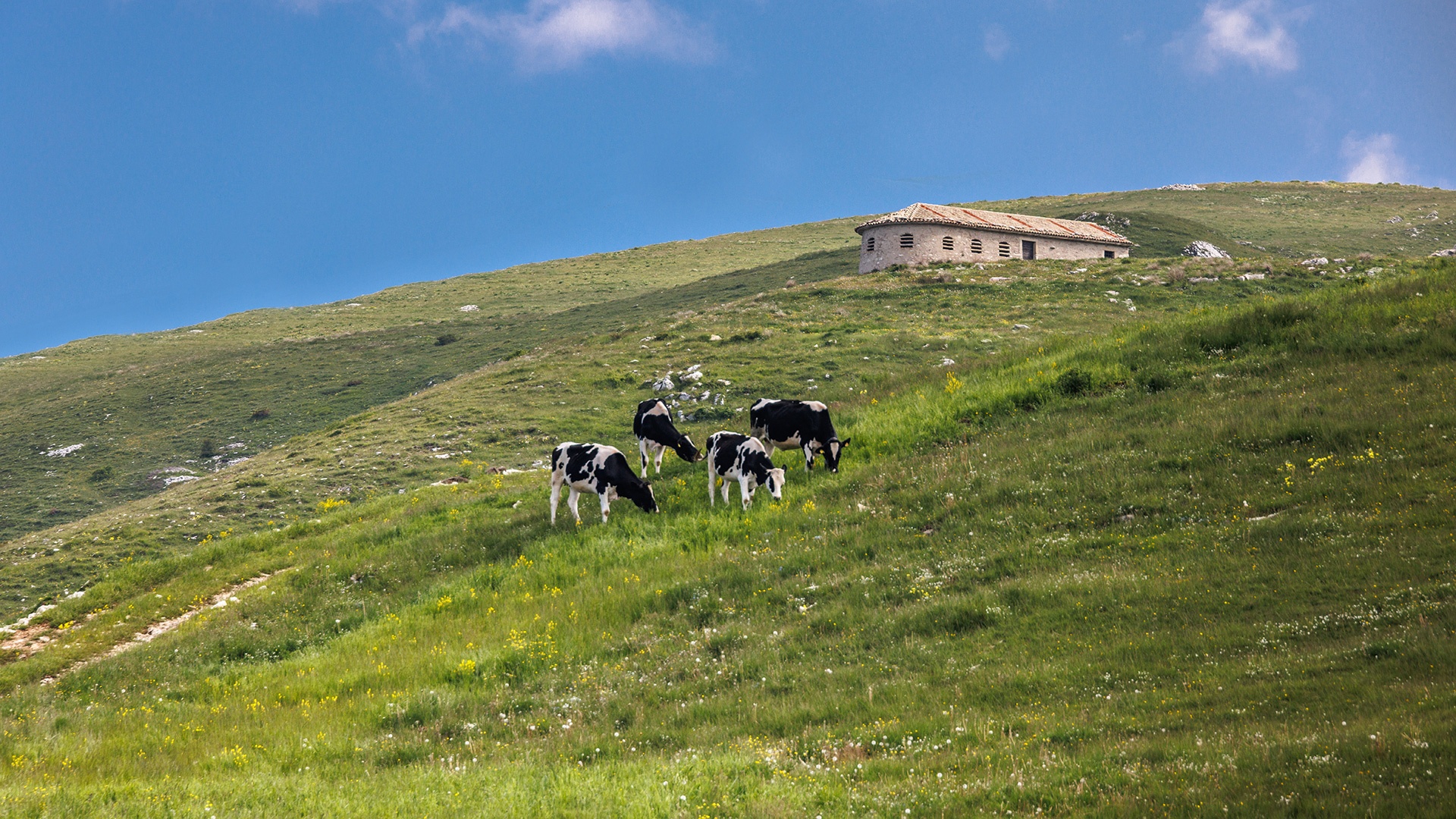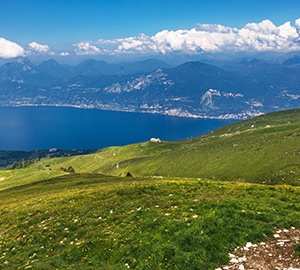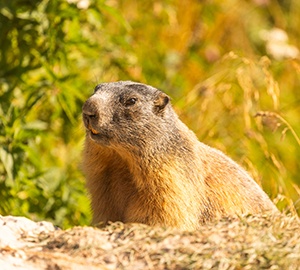Prada Localion
The mountain resort of Prada is in the municipality of San Zeno di Montagna and Brenzone sul Garda, and there are various historical and linguistic theories as to why it was given this name.
The word "Prada" probably comes from the Latin "pratum", meaning "meadow".
The name "Prada" is therefore closely linked to the natural features of the area, and its historical use for grazing and other mountain activities. Indeed, Prada played an important role for local communities, as it was used for raising livestock.
During the 1970s, tourism began to develop in the area, reaching its peak in the 1980s and 1990s when the original ski lift was in operation.
Prada is easily accessible from the Affi motorway exit and the surrounding areas, and is also in a unique scenic position, providing one of the most evocative viewpoints over the lake and a network of wonderful trails for exploring the mountain.
The resort is divided into two parts. Prada Bassa, at 935 m above sea level, shows signs of a typical agricultural past, with many cattle sheds, pastures and traditional inns. Prada Alta, at 1060 m above sea level, is mainly devoted to tourism and the starting point for the Prada-Costabella ski lift.
It is particularly cool and airy in the summer months, making it an ideal destination for those who love the mountains and want to escape the sultry heat of the city, even for just a day. There are various bars and restaurants, hotels and private and tourist apartments in the vicinity. For those who want to spend the day out here, there are picnic spots with benches, tables and barbecue area, a car park and playground.

Art, history and tradition
Those interested in history and tradition may like to visit the church of San Francesco d'Assisi in Prada Alta, which is associated with the parishes of San Zeno and Lumini-Prada. The church of San Bartolomeo in Prada Bassa dates back to the sixteenth century. There are also many chapels high up in the mountains. For example, the chapel of La Madonna della Neve (Our Lady of the Snow) is at Malga Ortigara in the high pastures. It was built in the seventeenth century as an ex voto for escaping the threat of the plague. There is also the alpine church of Costabella, which is very close to Rifugio Chierego, and contains the remains of a young soldier called Raffaele Solve, who died in Nowo Kalitwa, Russia on 4 January 1943, at the age of just 21. The chapel was seriously damaged in 2018 by Storm Vaia, but was rebuilt thanks to the efforts of ANA, the National Alpine Association of Verona, and reopened in July 2023.
In addition to the chapels and the many mountain huts, another feature of the landscape are the "capitelli" (shrines), a sign of the religious devotion of the people of Monte Baldo. They are located at crossroads and along paths and serve as destinations for processions and for praying the rosary for a successful harvest.




